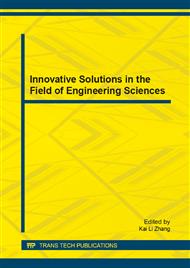p.618
p.623
p.629
p.634
p.639
p.645
p.651
p.656
p.660
Simulation of Non-Destructive Testing on Weld Surface Crack of Metal Structure by Electromagnetically Stimulated Infrared Thermography
Abstract:
With the wider use of metal welded structure in engineering machine, on-line inspection on weld crack is of great significance. This paper reports an emerging nondestructive approach----electromagnetically stimulated infrared thermography technique, for the detection and characterization of surface cracks. According to the electromagnetic thermal coupling analysis theory, different abnormal temperature field distributions caused by various crack dimensions , coil lifting heights, stimulated frequencies and paint film thickness were obtained, via 3D finite element analysis (FEA).The results show that the weld surface crack detectability are greatly influenced by the crack width and the paint layer thickness, with coil life-off height decreasing and electromagnetic excitation frequency increasing, the maximum abnormal temperature difference increases. There is a certain reference value for further research on the design of the electromagnetically stimulated control device.
Info:
Periodical:
Pages:
639-644
Citation:
Online since:
June 2014
Authors:
Keywords:
Price:
Сopyright:
© 2014 Trans Tech Publications Ltd. All Rights Reserved
Share:
Citation:


